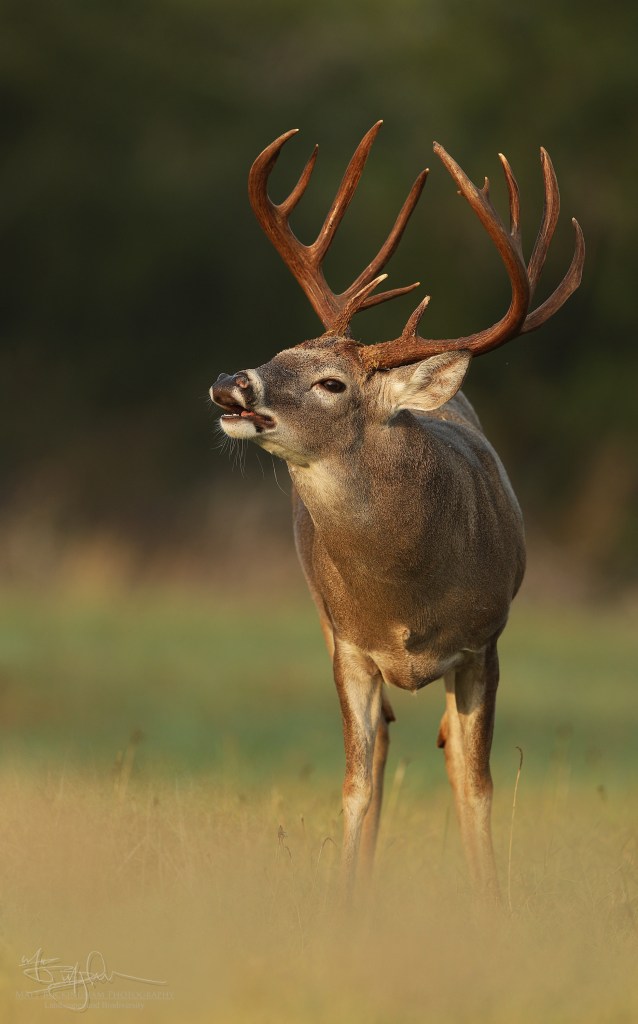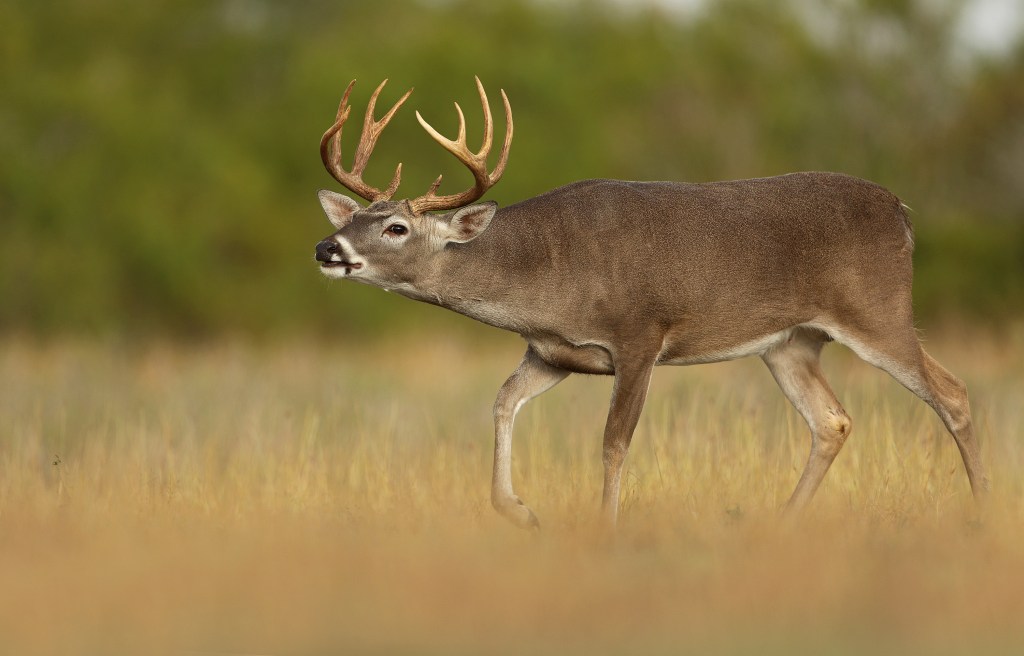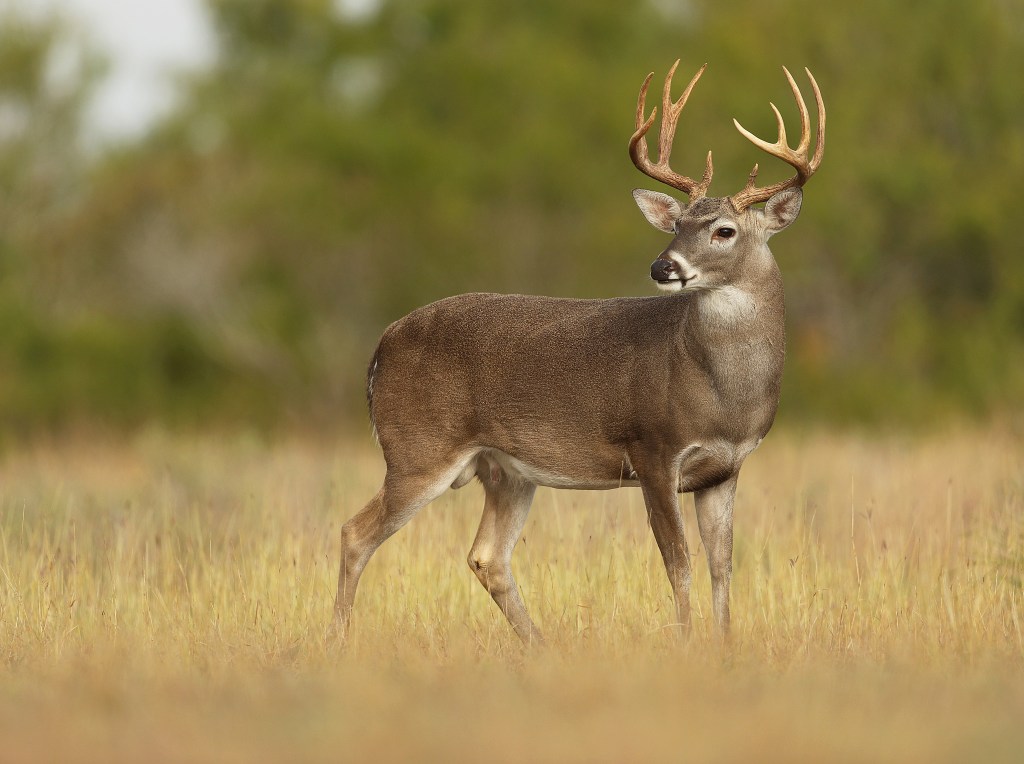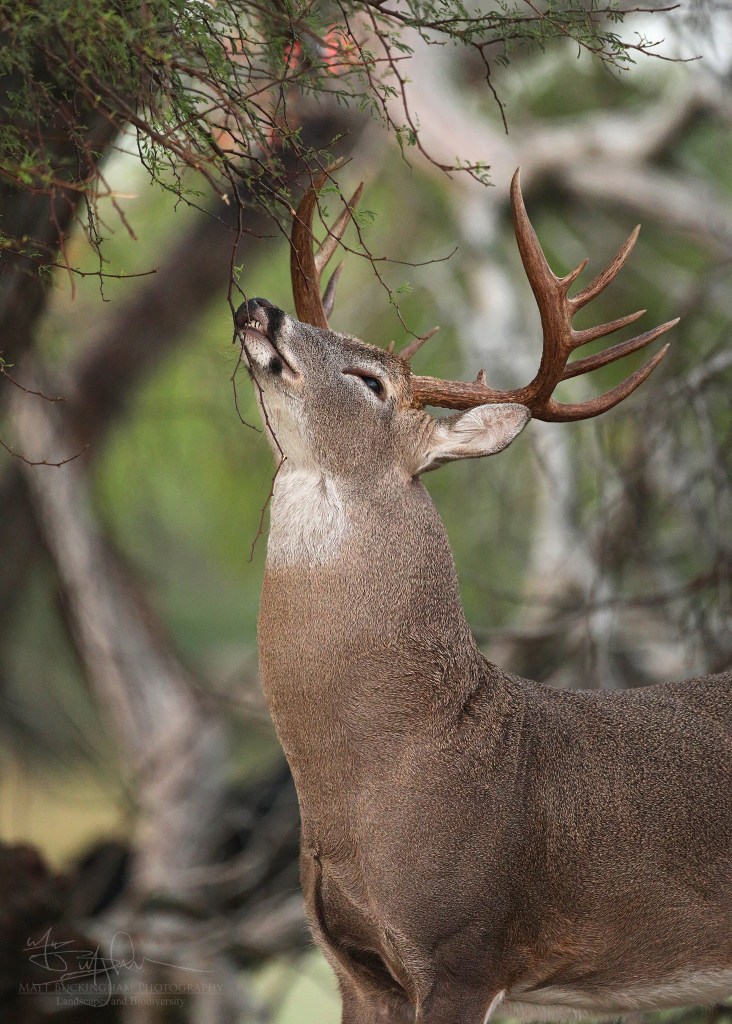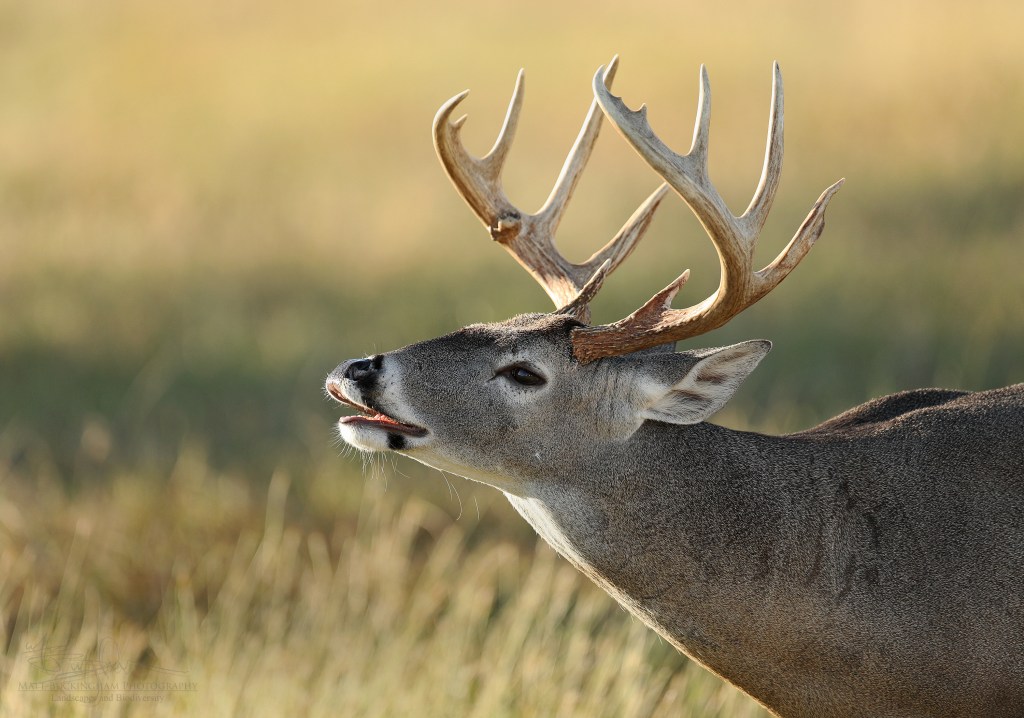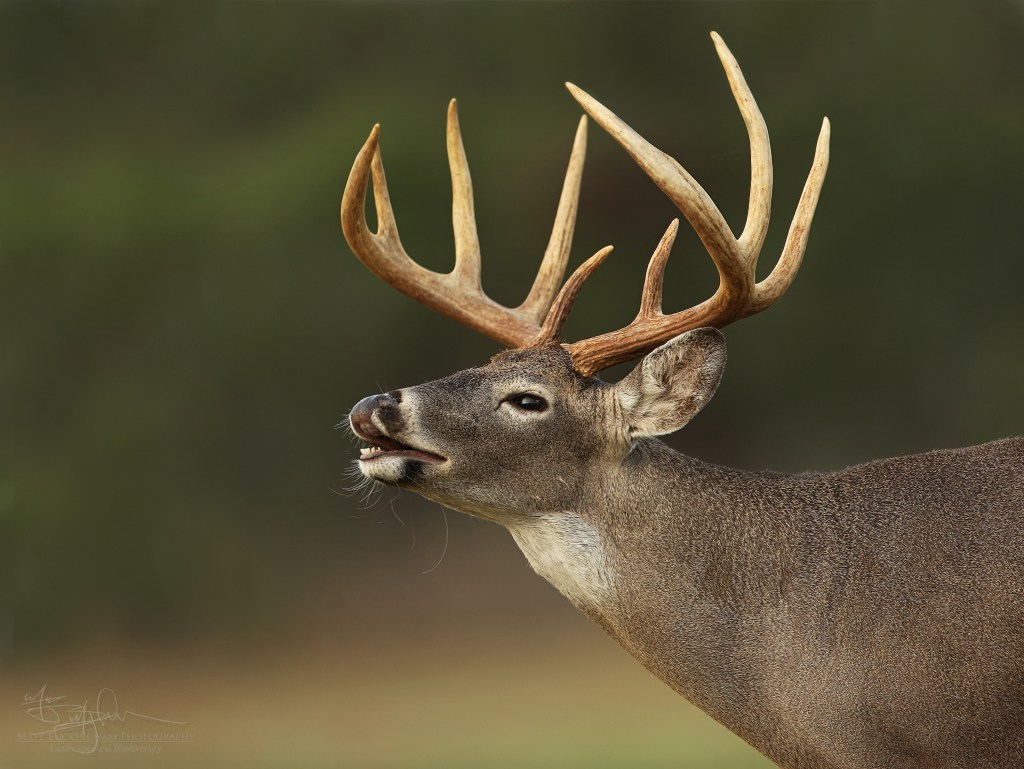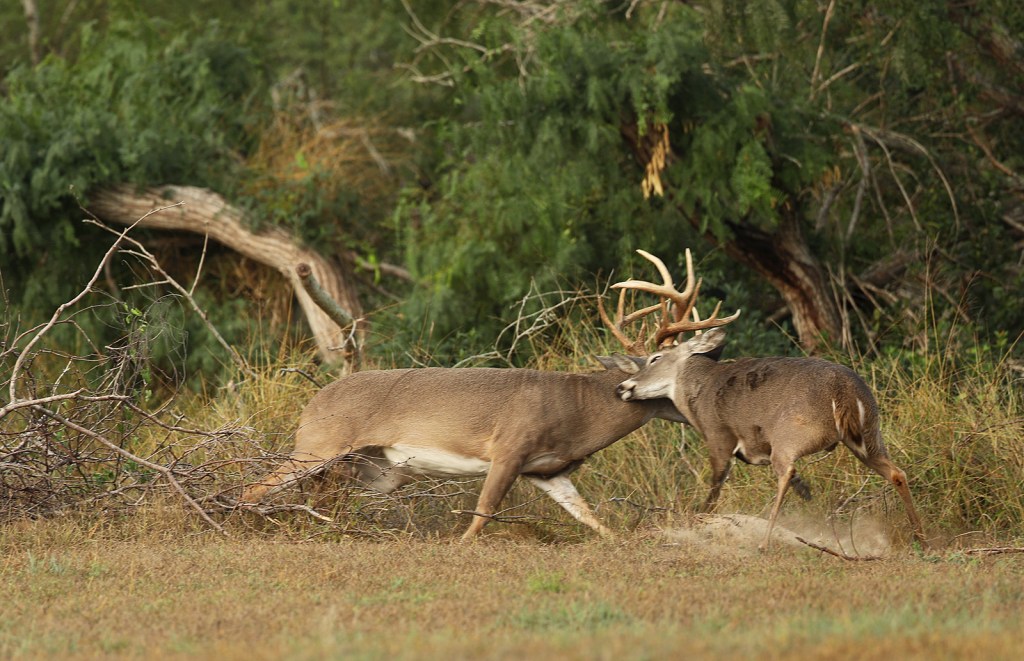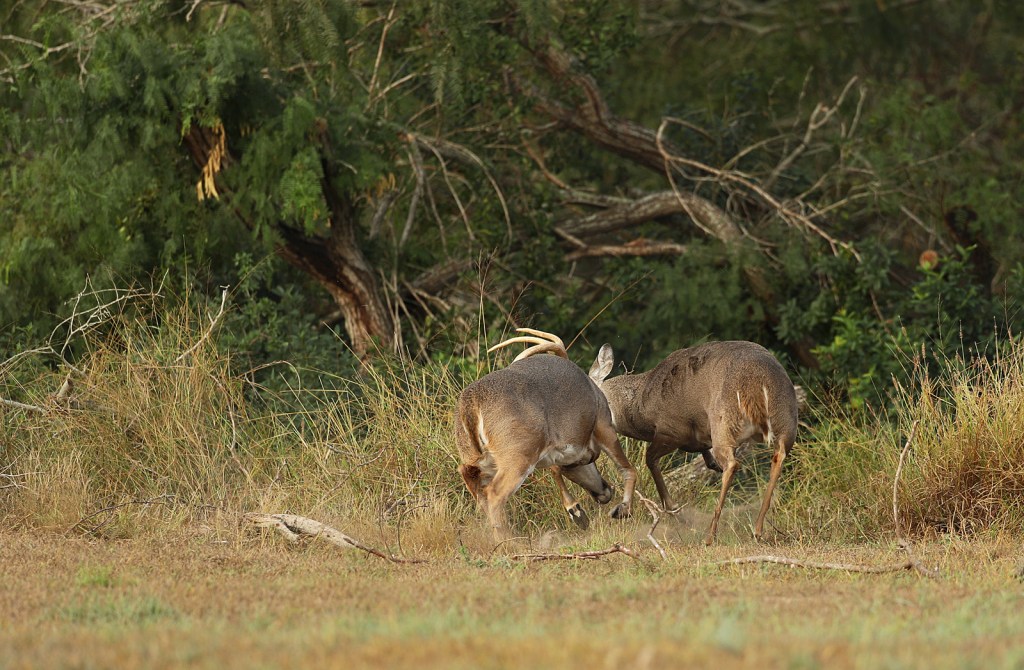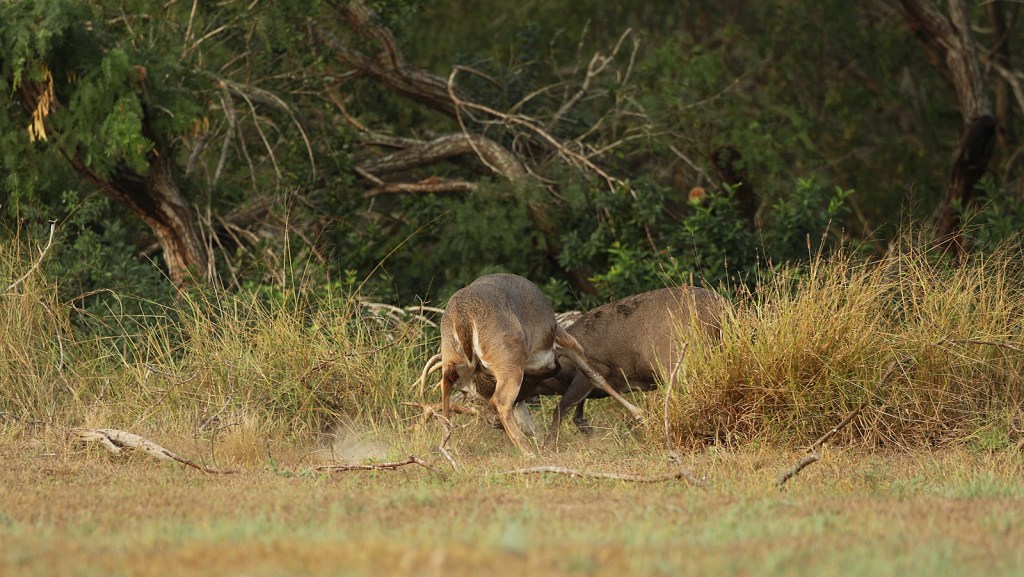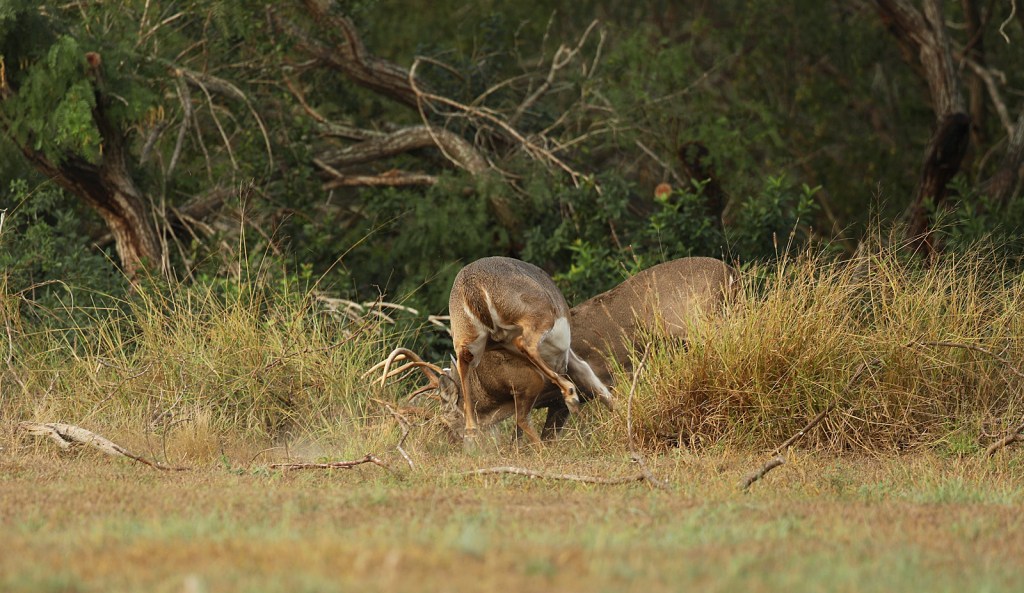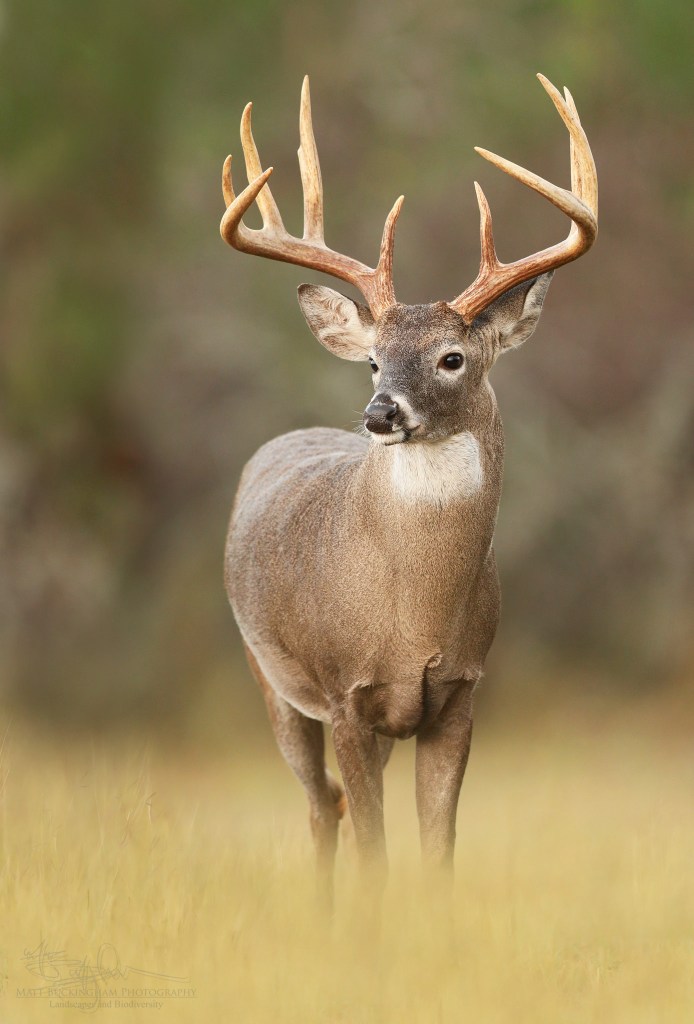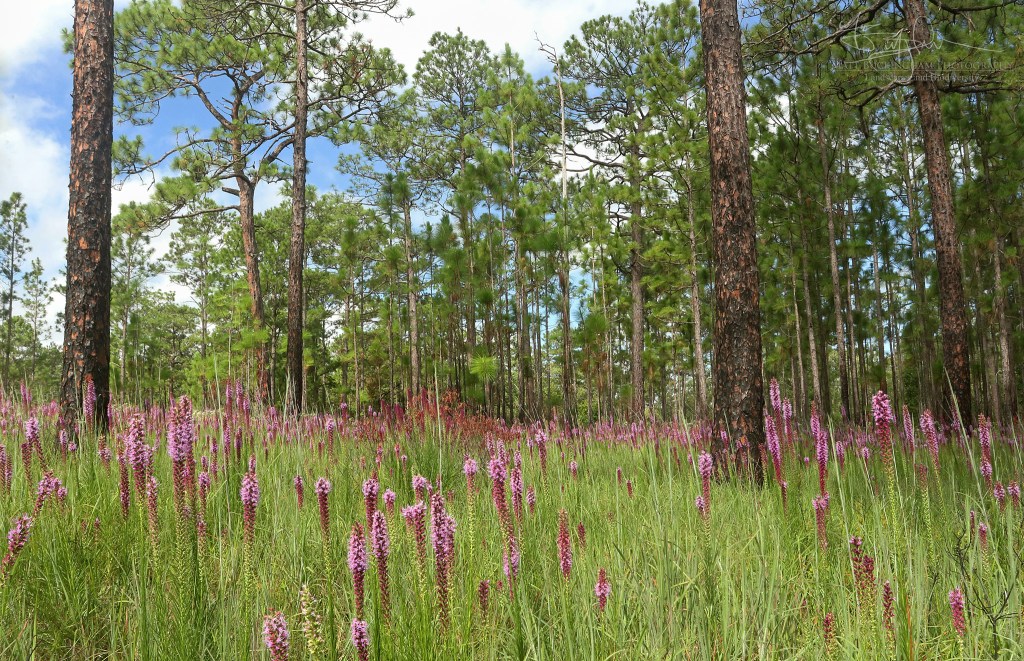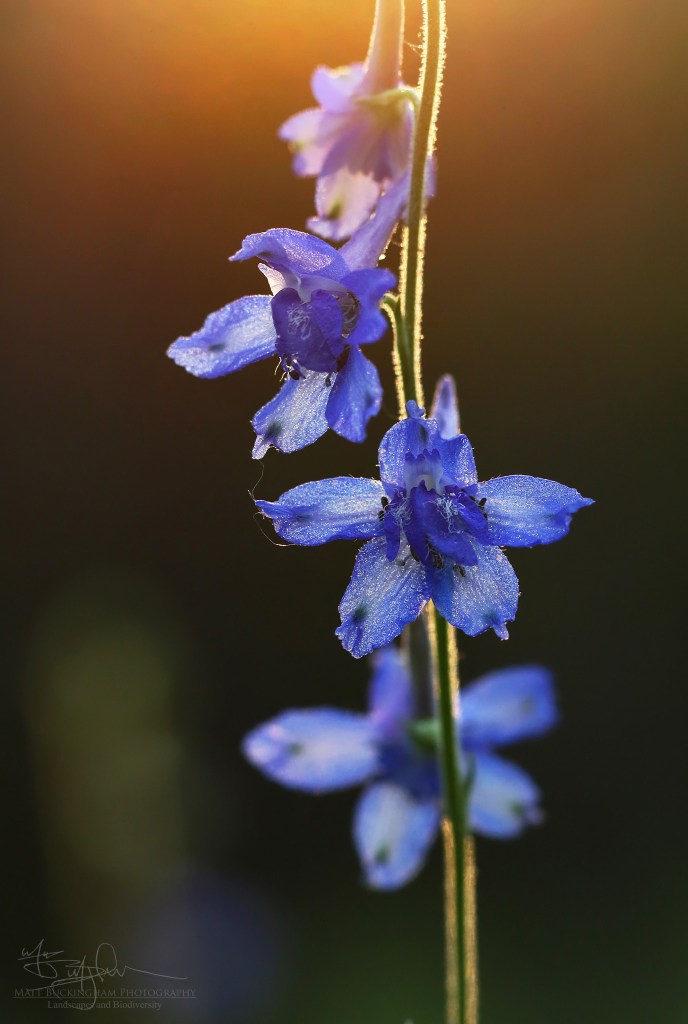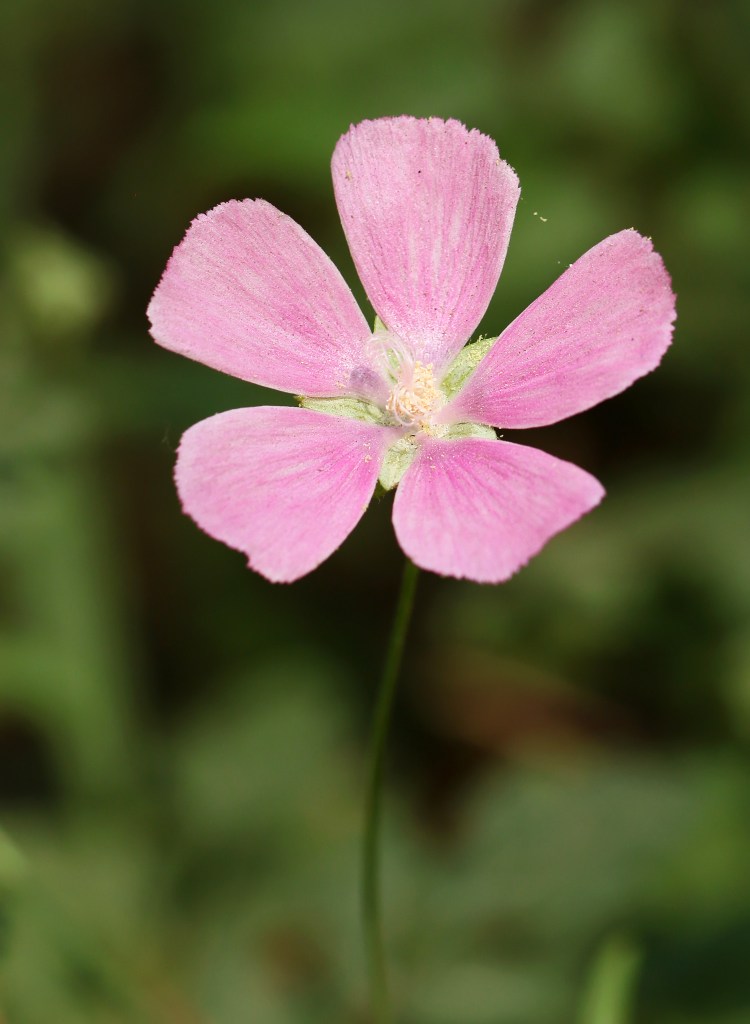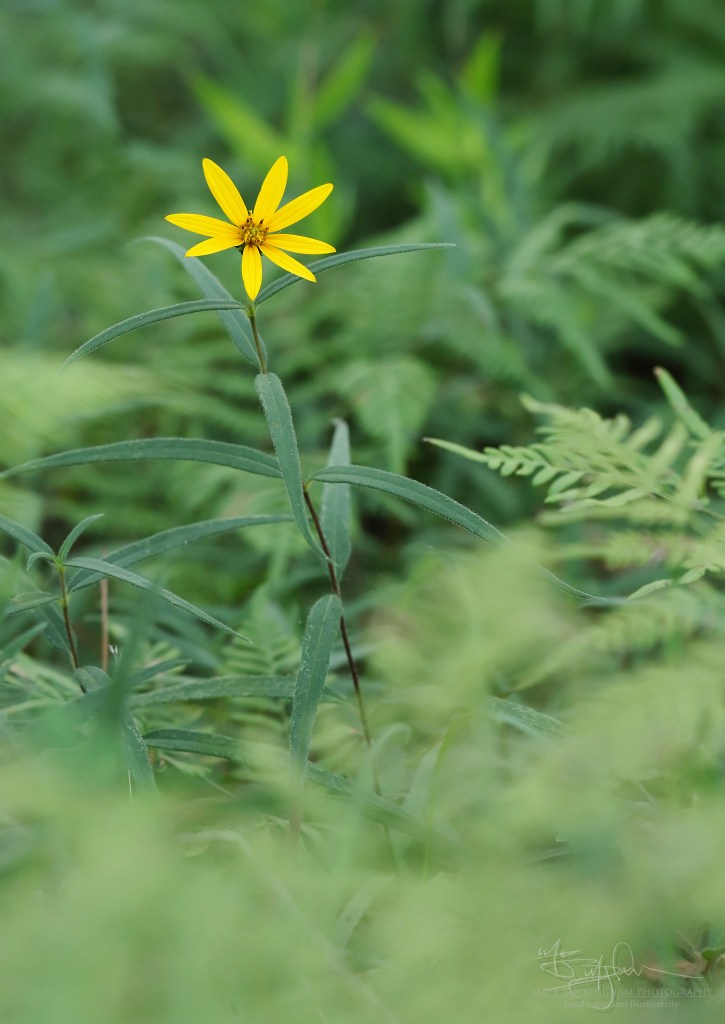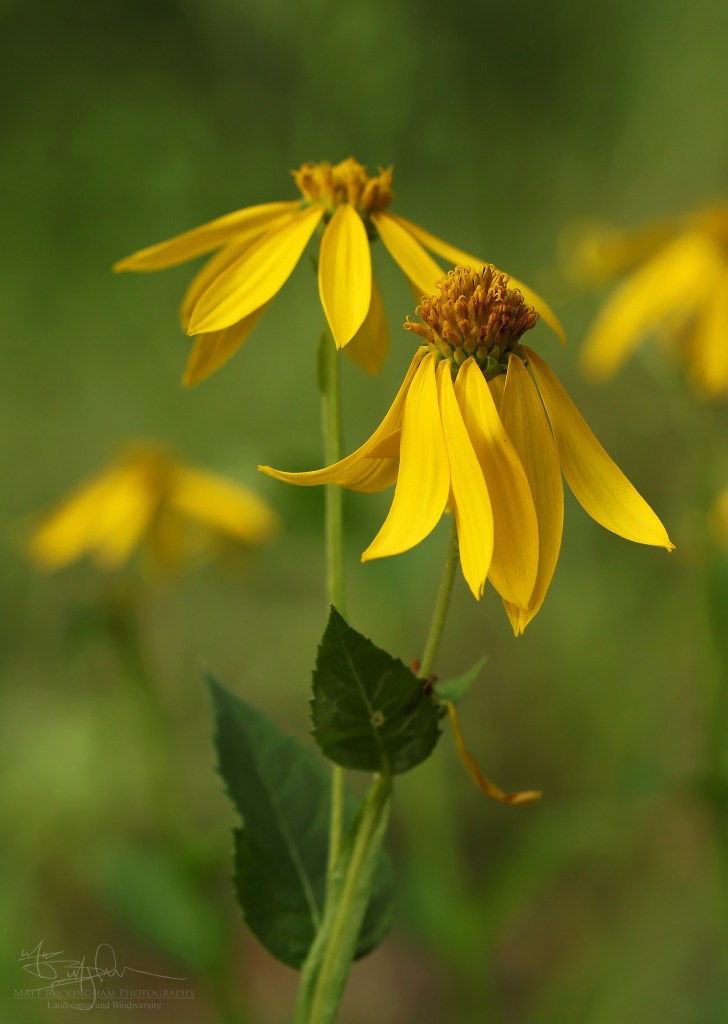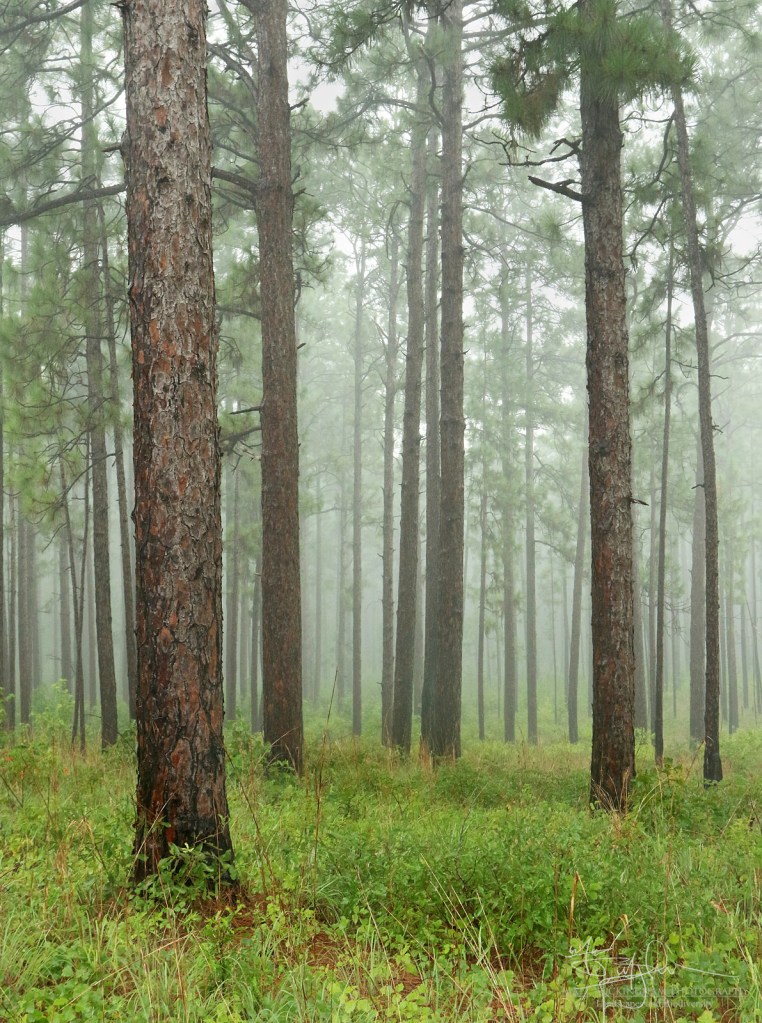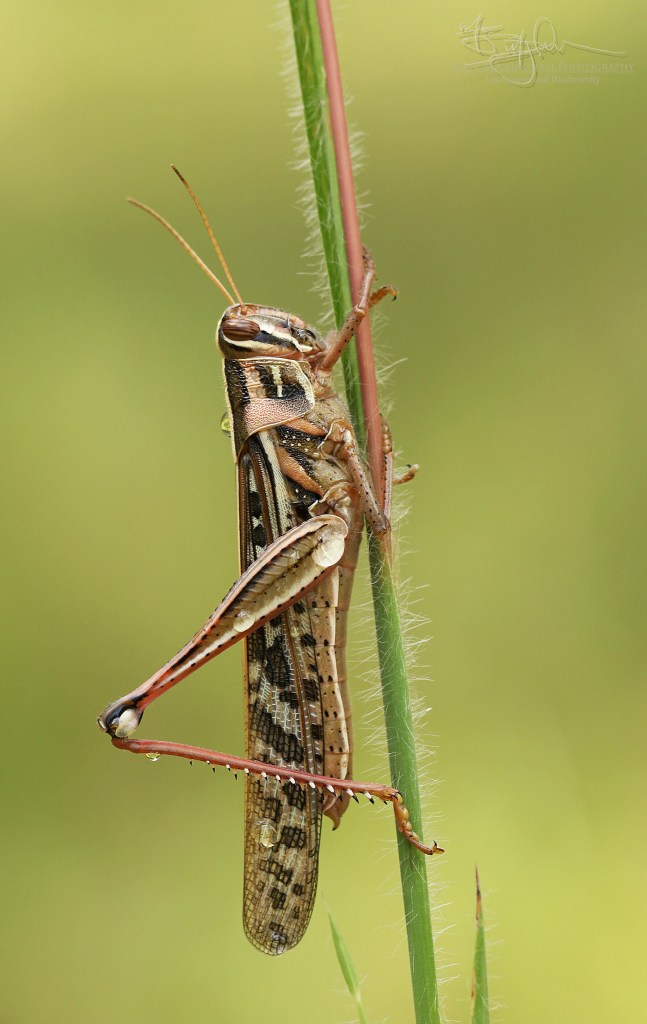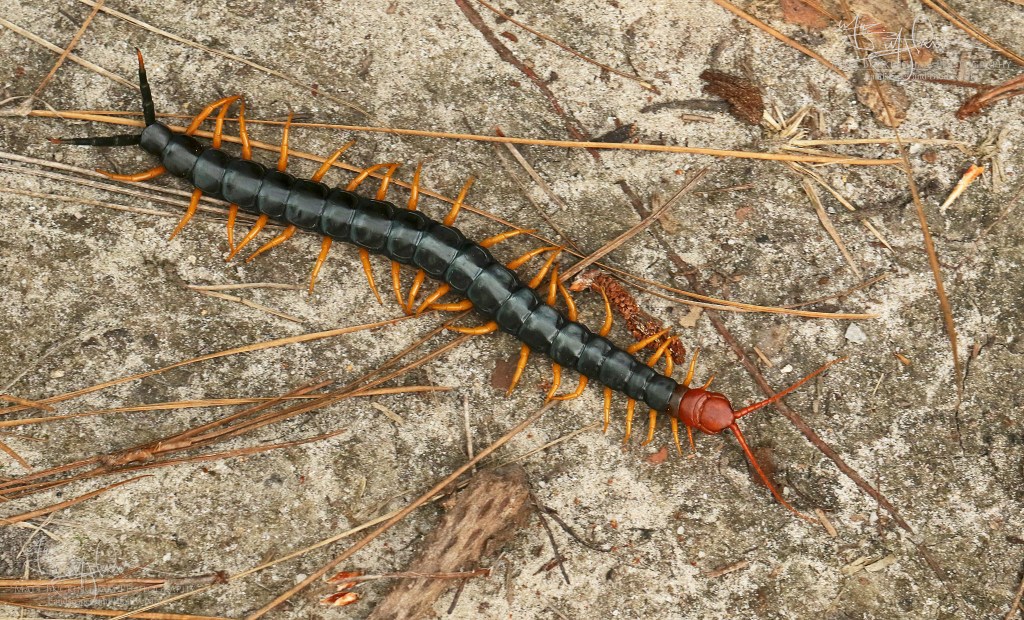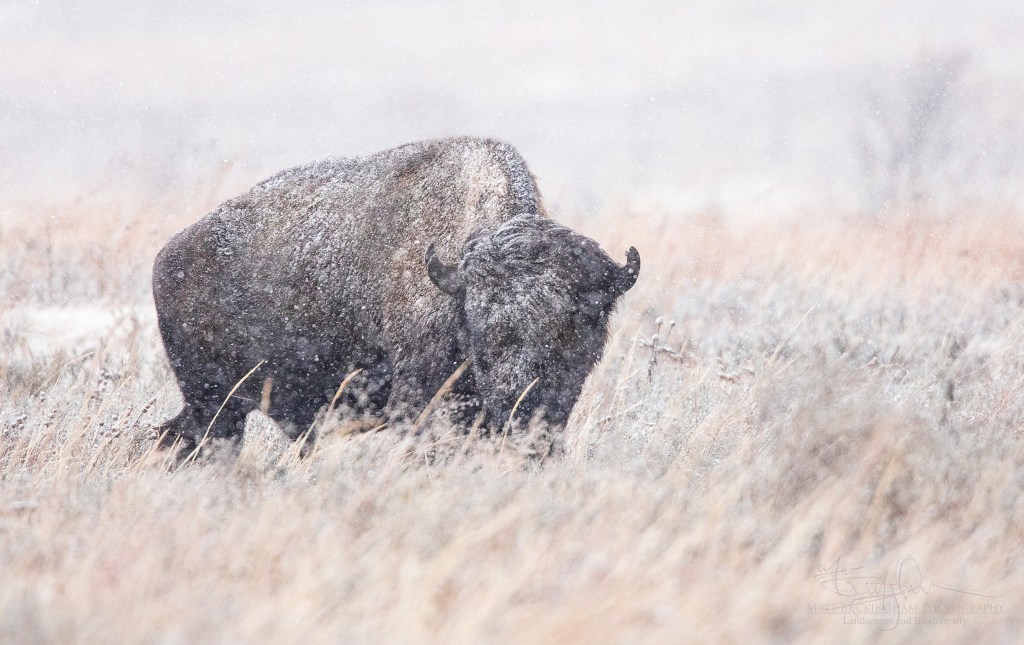
It’s no secret that the natural landscape of North America has changed since European colonization began in earnest. By the signing of the declaration of independence, elk, wild turkey, and other game were already gone or disappearing fast from the eastern U.S. At that time there was still an incredible abundance of wildlife west of the Mississippi, as evidenced by the journals of Lewis and Clark and other early explorers and settlers that ventured forth in the early 1800s. It didn’t take long, however, for these once seemingly limitless populations to begin to vanish, and in less than a lifetime tens of millions of plains bison, pronghorn, elk, and deer were killed until populations teetered on the brink of extinction. It was a time of unregulated hunting, and most anything that walked, flew, or swam was fair game. Bird populations were decimated for meat and plumes; predators were eliminated for the threat they posed to the livestock brought in to tame the land; and entire sections of river were voided of fish.
Unregulated market hunting was the primary driver for these population declines, at least initially. Shortly after arriving, these colonizers began to break the land and bend it to their will. Native vegetation was cleared, removing a diversity of native forage and nuanced structure that served as important structure for a myriad of species. Fire was suppressed, and keystone species like the plains bison, which impacted their environment on so many levels, were removed, initiating a domino effect that caused many natural communities to fall apart.
Take the black-tailed prairie dog (Cynomys ludovicianus). Once perhaps the most abundant mammal on the continent, it is believed that some very large colonies may have numbered one hundred million animals or more. Despised as pests that destroyed cropland and competed with cattle for forage, these social rodents were systematically exterminated, and the plow broke the soil to the point that it could no longer be utilized for their subterranean civilizations. In less than 100 years, their population was reduced by more than 95%.
Like the bison, the prairie dog is a keystone of the plains. The black-footed ferret, for example, feeds almost exclusively on prairie dogs and seeks refuge in their burrows. Prairie dogs are also an important food source for American badgers and a variety of raptors. Where their ranges overlap, Burrowing Owls will frequently utilized prairie dog colonies for shelter, as will a variety of snakes, amphibians, and invertebrates. The loss of the bison and the prairie dog threw the great plains deeper into a downward spiral of ecological disaster.

By the early 1900s it seemed like the prairie dog might go the route of the passenger pigeon, a similarly abundant species that we wiped from existence. But the gregarious ground squirrels found refuge from a boon in protected lands, and eventual reintroduction efforts throughout their historic range. One such introduction effort took place in the Wichita Mountains National Wildlife Refuge, where they have since established several large towns to the benefit of the refuge’s other prairie denizens. Today their range-wide population numbers in the tens of millions, and their future seems secure.

The Wichita Mountains National Wildlife Refuge was first set aside in 1901 by President McKinley as the “Wichita Mountains Forest Preserve”. A few years later, renowned conservationist President Teddy Roosevelt re-classified the area as the “Wichita Forest and Game Preserve”, and designated its purpose to preserving the wildlife that had become so scarce in his lifetime. It was protected before the land could be scarred by the plow, and today contains excellent example of mixed grass and oak savanna communities.
Many species find refuge in the Wichitas. White-tailed deer (Odocoileus virginianus) are common here, and fueled by good forage and genetics, bucks can reach impressive sizes. It is hard to imagine that a species as familiar and ubiquitous as the whitetail was once scarce, but like most other game species, they too were pushed to the brink of extinction by the late 1800s. Unregulated hunting for burgeoning wild game markets in big cities reduced their numbers to the point that they had disappeared completely from many portions of their range.
Like many other species, the whitetails benefited tremendously from the passage of wildlife regulations like the Lacey Act, which prohibited interstate trade of game, essentially putting an end to the era of market hunting. The establishment of science-based hunting regulations and conservations efforts helped deer populations bounce back, and today they are likely near historic numbers.

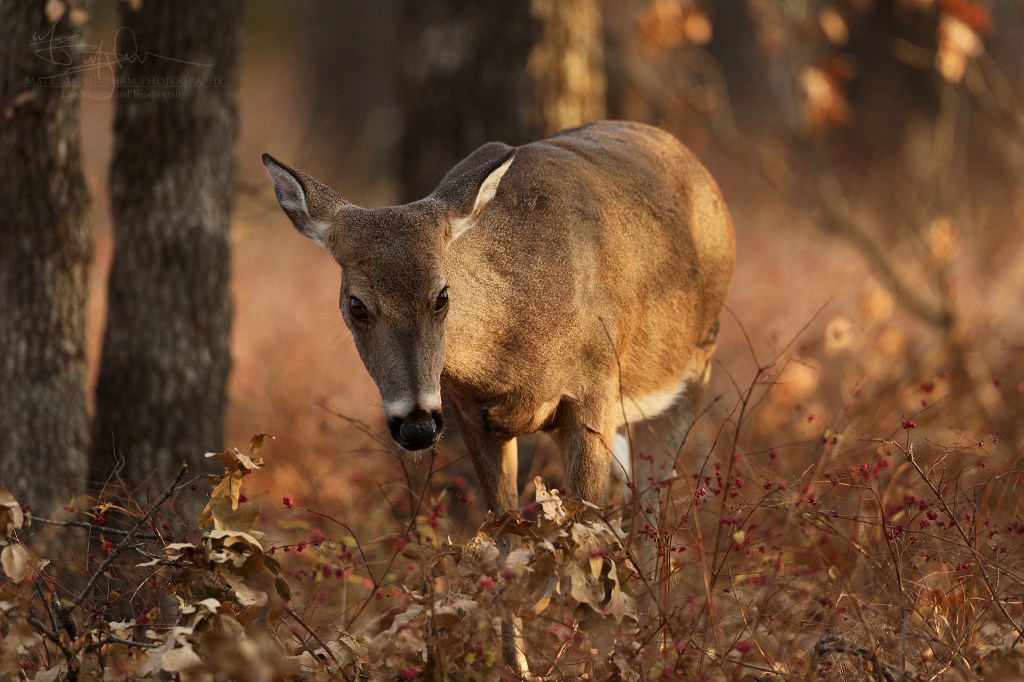
Even the Wild Turkey (Meleagris gallipavo), the bird that Benjamin Franklin thought should replace the Bald Eagle as a national symbol, was once at risk of disappearing from the wilds of North America. Save for a few strongholds, they were heavily hunted for both their meat and their feathers. Like the majestic whitetails, the famous gobblers benefitted from those hunters and conservationists of the early 1900s that laid the groundwork for sound management and gradual recovery. There have been extensive turkey reintroduction efforts around the country, and while they still struggle to get a foothold in some parts of their former range, in other areas, like the Wichita Mountains they have rebounded nicely.
In 1904, U.S. Biological Survey biologist James H. Gaut noted that few turkeys were left in the Wichitas, noting that “Before the country surrounding the mountains was opened to the whites, wild turkeys were extremely abundant but have since been thinned out.” Reintroduction efforts on the refuge began in 1913 and continued into the 1940s when a number of turkeys from Aransas National Wildlife Refuge were brought in. The population in the Wichitas quickly flourished, and from the 1920s to the 50s, turkeys from the refuge were trapped and used to repopulate other portions of their former range, including the Fort Niobrara National Wildlife Refuge, formerly the Niobrara Game Preserve, in Nebraska and the Rio Grande National Forest in Colorado.

Perhaps no species better exemplifies the plight of North America’s wildlife than the American bison. It’s hard to imagine a time when one could travel across the prairie for days and never have a view devoid of bison. Tens of million bison once roamed the continent, and traveled in such numbers that they left literal scars in the earth. The bison once roamed the vast majority of North America, with occurrences from Alaska to Mexico to the Piedmont of the eastern U.S. By the time Lewis and Clark set out on their fateful journey west, bison were already mostly gone east of the Mississippi. The west, however, still held a bounty of wildlife including vast herds of plains bison that reportedly stretched from horizon to horizon.
Once the riches of the west were reported to a burgeoning new nation, it was not long before the wilderness was conquered, and within a single generation the bison population went from 30 million or more to as low as 500. There were many driving factors fueling this massacre, including markets for meat and hides, efforts to subdue Native cultures, and in some cases, simply for the fun of it. The legendary Tatanka, the largest land mammal of North America, was almost lost forever.
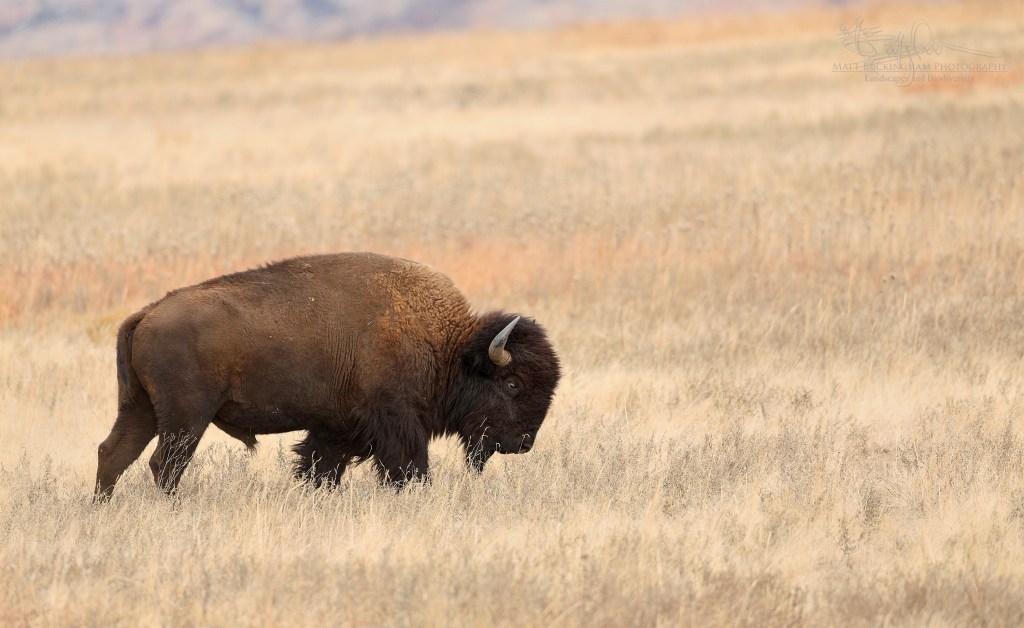
By the late 1800’s, realizing that if things continued as they were that this important part of our heritage would be lost forever, lawmakers began pushing for protections for the bison. They were initially met with resistance, but eventually many states outlawed the killing of bison. For most this was too little too late, as the shaggy prairie dwellers had already been gone for years. Funds were appropriated to protect the few bison remaining in Yellowstone National Park, and individuals including the famed Texas rancher Charles Goodnight brought animals into captivity.

In 1907, six years after a large portion of the Wichita Mountains was set as, fifteen bison were reintroduced. With the protection afforded by the refuge, the bison flourished, and today number between 600 and 700 individuals. Bison in Yellowstone and other protected areas began to recover, and in total today it is estimated there are approximately half a million scattered in private and public herds across the U.S., Canada, and Mexico. Most of these herds are bound by fences, and even the most wild of these herds are still managed, however to ensure that their populations do not grow too large or spread beyond the boundaries of their intended management units. I doubt that we will ever see the day when bison are allowed to truly roam wild and free, but am happy that places still exist where we can catch even a glimpse into what once was.

The last wapiti in the Wichita Mountains was likely killed sometime in the 1870s or 80s. Like the bison, the wapiti (or American elk) once ranged across much of the North American continent, until their numbers were reduced to dangerously low levels. Shortly after bison were reintroduced to the Wichitas, a handful of elk were brought in. Their numbers quickly grew, and today a healthy herd can be found on the refuge. Conservation efforts to protect habitat and reintroduce elk into their former range have helped the species bounce back from the brink, and today large populations exist in many states and provinces.

Considering that it lies only six and a half short hours from home, it’s a wonder that Caro and I hadn’t yet visited Wichita Mountains National Wildlife Refuge. Having read about the place and its reintroduced inhabitants for years, I finally suggested we visit, and we soon found ourselves heading northwest with our good friends James and Erin Childress. We ended up camping at the nearby Great Plains State Park, as tent camping was temporarily unavailable at the refuge campground.
We spent the our first two days exploring the refuge. We visited a large prairie dog town that was easily accessible from the main road. We watched tom turkeys strutting their stuff, white-tailed deer moving warily through the post oaks, and several small groups of bison and elk. On the evening of our second day at the refuge, we drove up to the top of Mount Scott. It was a surprisingly steep, winding ascent and at the top we were rewarded with one of the most spectacular sunsets I can recall, as the clouds that hung heavy throughout the afternoon gave way to a sun that painted them pink.
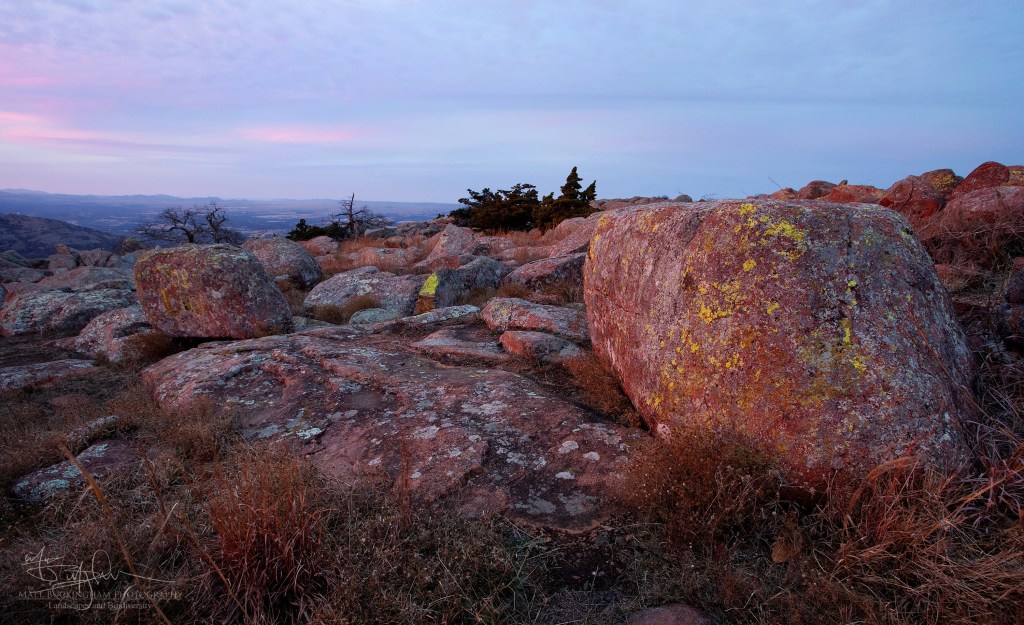
We spent our evenings around the campfire, enjoying good camp food and hot chocolate spiked with whiskey and baileys. We made jokes, told scary stories, and reminisced on the special things we had thusfar encountered on this trip and trips past. Sometime during the night on our second evening in the tent it began to rain. By dawn it had turned to sleet. And by the time we had reached the refuge we were greeted with full fledged snow flurries.
Both James and I were excited about the photo ops that these unique conditions might present. At first we thought that the wildlife must have found sheltered areas to hunker down and weather the storm. But then, just in front of our little caravan a massive bison bull bounded across the road. He was literally frolicking. He ran to join another group of bachelor bulls, and soon began to leap up and down, roll in the snow, and challenge them to play fights. It made me think back to all that time rough-housing in the snow as a kid growing up in the suburbs of Chicago. The snow must have felt downright wonderful to this massive animal with its big shaggy coat. These relics of the ice age are built to withstand the cold and snow, and the freezing precipitation must have been a welcome relief from the heat of the southern plains.
Conditions like this can produce some truly special images, however photographing in them is quite difficult and often unpleasant. Autofocus is all but useless as it tries to lock on to every glob of snowflakes falling through the sky. Relegated to manual focus, my hands, which i kept ungloved to allow better dexterity while operating my camera rig, began to freeze. It was all worth it, however. I was very happy with the few images I was able to capture – not necessarily for their aesthetic qualities, but for the special memory of witnessing these gleeful bovines loving life in the snow.

The Wichita Mountains are world famous for its large mammals, but it is also a bird watchers paradise. Later that snowy day I had one of my most memorable experiences to date watching and photographing birds. We had stopped near a small canyon, and here Caro and I split off from James and Erin for a while. I setup to photograph landscapes, hoping to captures the interesting color and arrangement of the boulders scattered throughout the hills. Caro quickly called me over to show me an interesting bird. A Spotted Towhee!! And I had left my big lens in the truck. I quickly ran back to the truck, grabbed the lens, and returned to the spot. And the towhee was still there! Unfortunately he was gone before I had a chance to capture his likeness. I was, however, able to photograph a handsome Dark-eyed Junco (Junco hyemalis) on a snowwy oak branch.

Just ahead Caro and I could see a flurry of bird activity. Moving forward we spotted huge groups of Field Sparrows, Dark-eyed Juncos, Chipping Sparrows, White-crowned Sparrows and more foraging on the ground and low shrubs. As we approached, a male Spotted Towhee (Pipilo maculatus) hopped up on an oak twig directly in front of me! And much to my surprise and delight he sad long enough for me to capture a few frames. I had long wanted to photograph this stunning species, and the experience had left me shaking, both from excitement and the considerable chill in the air. But this was just the beginning.

I was having trouble deciding which sparrow to focus on when a group of chunky songbirds flew into a leafless shrub not twenty feet from me. Harris’s Sparrows (Zonotrichia querula)! It was a species that both James and I were really hoping to have the opportunity to photograph this trip, and they were giving me some incredible photo ops. As my shutter clicked, I found myself wanting to reach out and high five James. But he wasn’t with me, and my heart sank a little knowing how badly he wanted this type of opportunity.

I had to keep an alert eye out as more and more birds came filtering through the snowfall. I saw an unusual silhouette atop an interesting perch against the white sky. I trained my camera on the bird and fired a few images without having the chance to identify it. Looking at my images later I realized it was a Rusty Blackbird (Euphagus carolinus)! This uncommon species is suffering dramatic population declines. The cause of this precipitous loss in numbers is still somewhat of a mystery, but likely linked to a variety of factors including habitat loss and contamination from pollutants. The Rusty Blackbird is on several conservation watch lists, and has an international team of scientists known as the Rusty Blackbird Working Group trying to identify and resolve reasons for these declines.

I found myself spending a lot of time following the Harris’s Sparrows around in hopes of trying different compositions and backgrounds. At one point I had found one nicely perched in a small opening of stunted oak. Just as I was ready to take the shot, a Dark-eyed Junco leapt up directly in front of it, catching my autofocus and foiling my attempt. It’s hard to be disappointed, however, when the photobomber is as cute as this.

I could have stayed with the sparrows all day, but it there were still some other parts of the refuge we were hoping to explore, so I made my way back to the truck. En route, a Bewick’s Wren (Thryomanes bewickii) hopped up in front of me, and sat for a few seconds surrounded by falling snow.
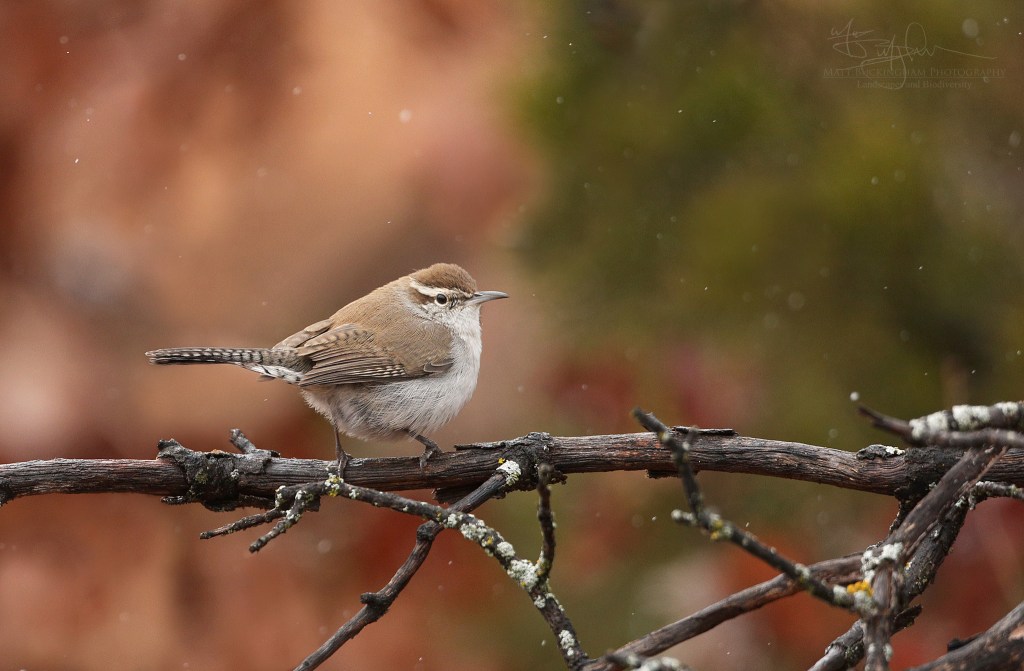
When I returned to the parking lot, I could see James and Erin sitting in their car. I walked up, and before I could tell James about my incredible encounter, he turned the back of his camera toward me. There on his LCD screen was an incredible image of a Harris’s Sparrow. It turned out that he had an experience very similar to mine! It made the entire experience all the more special.
The snow fell throughout the day as we continued to explore the refuge. We stopped at the “Holy City” located on the refuge where there was a church and a large marble statue titled Christ of the Wichitas. The road up Mount Scott which we had driven the previous evening was closed due to the unsafe conditions. As we made our way to the refuge exist I wanted to stop and capture a few images of the snowy landscape.
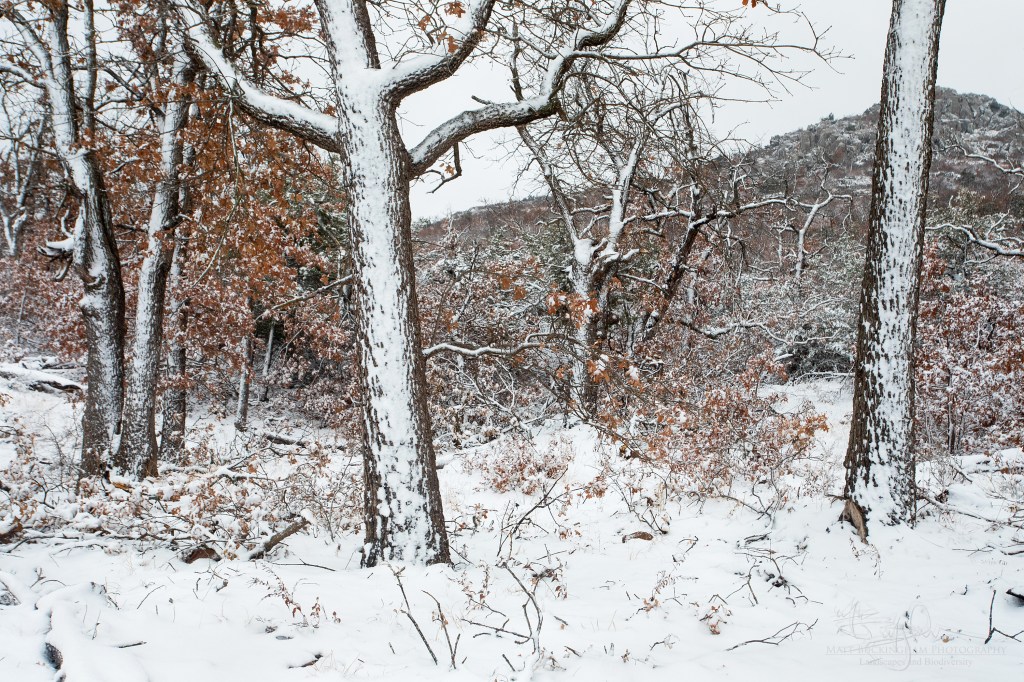

Shortly after leaving the refuge the clouds began to break and the sun made its first and only appearance of the day. Just outside the refuge we stopped to admire a pair of horses on a hill against the dramatic light, when I looked to the opposite side of the road to see a large flock of Mountain Bluebirds. James had seen them too, and we both set about photographing them. Unfortunately I was unable to capture anything I was happy with, but James walked away with some lovely images.
That night the mercury dropped quickly. We ate quickly ate our supper lest it freeze and retired to the tent by 7 PM. That night it dipped into the teens, but fortunately we stayed warm wrapped up in our mummy bags. I often struggle to sleep well in a tent, but Caro made our beds so comfortable this trip that I slept like a baby. The plan for the next morning was to wake early and explore the campground a bit, before heading back home by late morning.
Immediately upon stepping from the tent into the brisk morning air I could see and hear dozens of birds. Small flocks moved through the brush and boulders. Most abundant were Field Sparrows (Spizella pusilla). Though I saw many of these in the snow the day prior, I was never presented with a good photo opportunity, so I was happy to get the chance to capture a few frames on our last morning in the area.

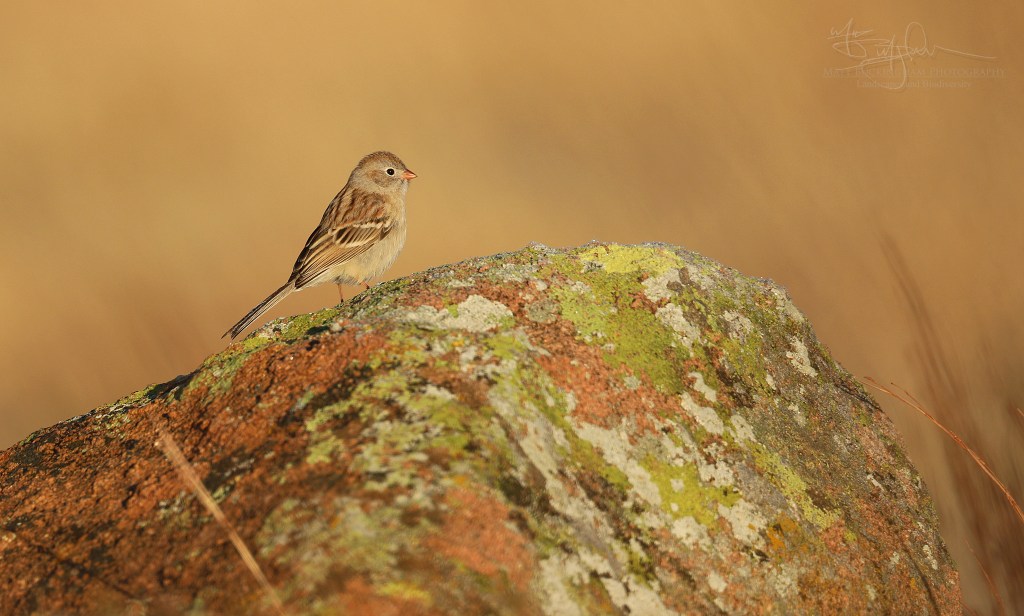

Then came a noisy group of White-crowned Sparrows (Zonotrichia leucophrys). They bounced about the boulders and low shrubs, chattering and singing all the while.


Then came the grand finale. A group of Harris’s Sparrows came in very close to where I had sat and concealed myself in the grass. In this group were a few particularly strikingly patterned and obliging individuals. It was a good note to end on.
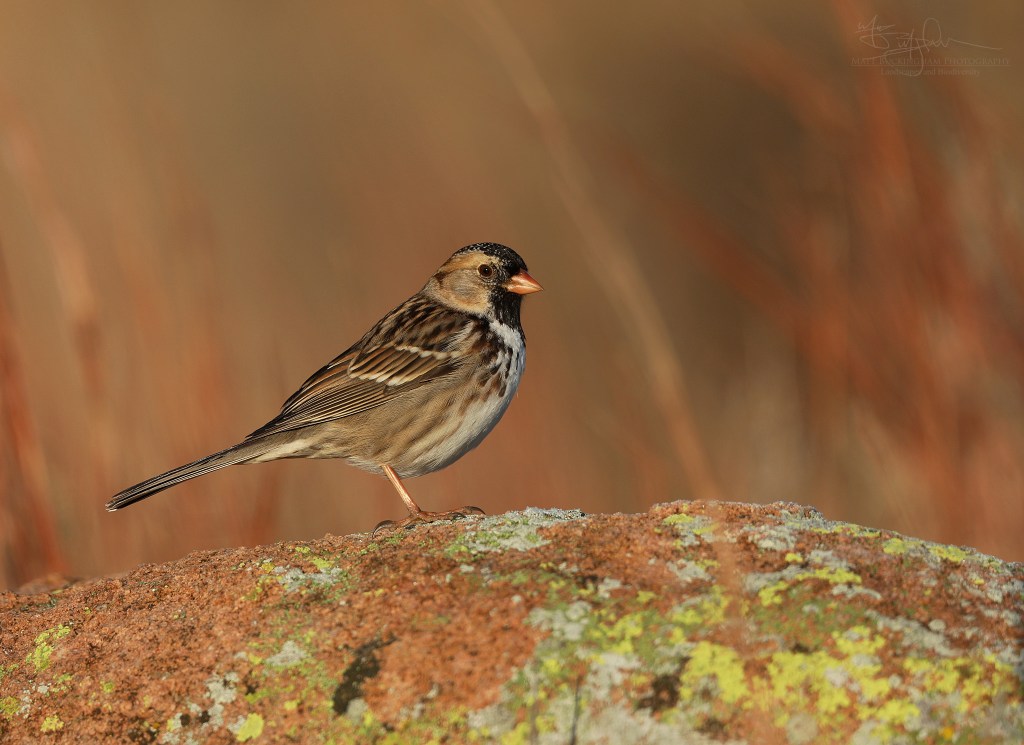
Unfortunately, shortly after I made these images, I dropped my cell phone somewhere in the prairie. Luckily, with the help of Caro, James, and Erin, we located it after about an hour of searching. Belongings all accounted for, we reluctantly bid farewell to the Wichitas.
Wichita Mountains National Wildlife Refuge provides a rare glimpse into what the prairie once was, with some notable exceptions. The buffalo wolf no longer roams here, nor does the American black bear that once sheltered in the oak woodlands dotting the prairie. Mountain lions are still occasionally found here. Attempts to reintroduce pronghorn to the refuge failed, as did attempts to introduce bighorn sheep, which were not native to the area, at least in recent times. There is also a large free roaming heard of “genetically pure” Texas longhorn on the refuge, which I suppose is either a good thing or a bad thing, depending on one’s point of view.
The Wichitas certainly left their mark on me. I look forward to returning one day in the spring to see the lace cactus in bloom and the bright breeding coloration of the Eastern collared lizard. Numerous Neotropical migrant songbirds breed here, including the Black-capped Vireo in one of the few locations outside of Texas it is known to summer. Long live these ancient granite hills, and long may the elk bugle and the buffalo roam.

